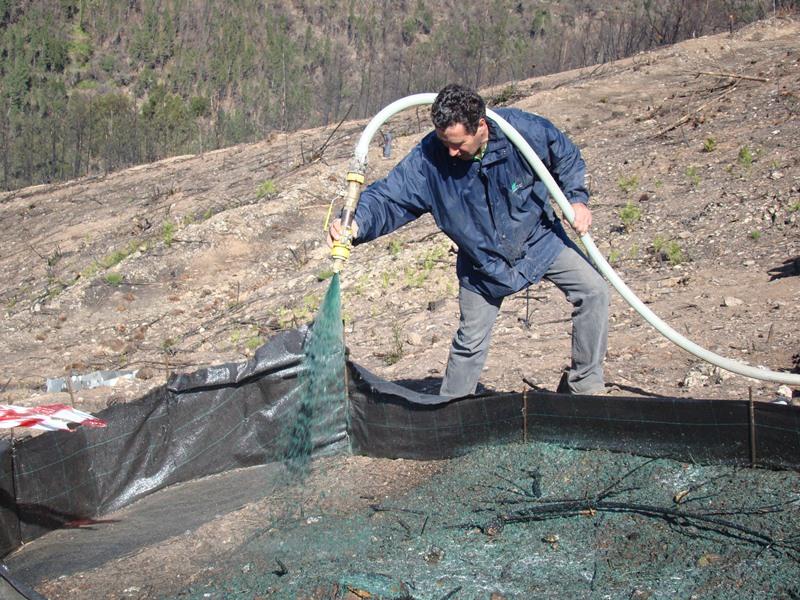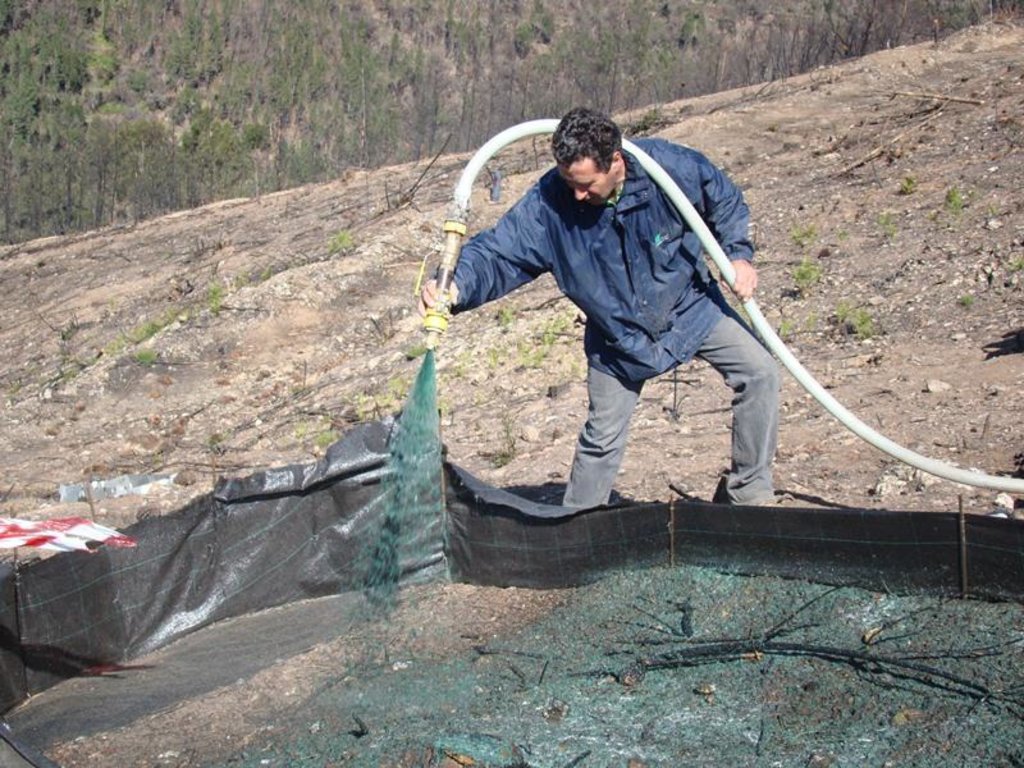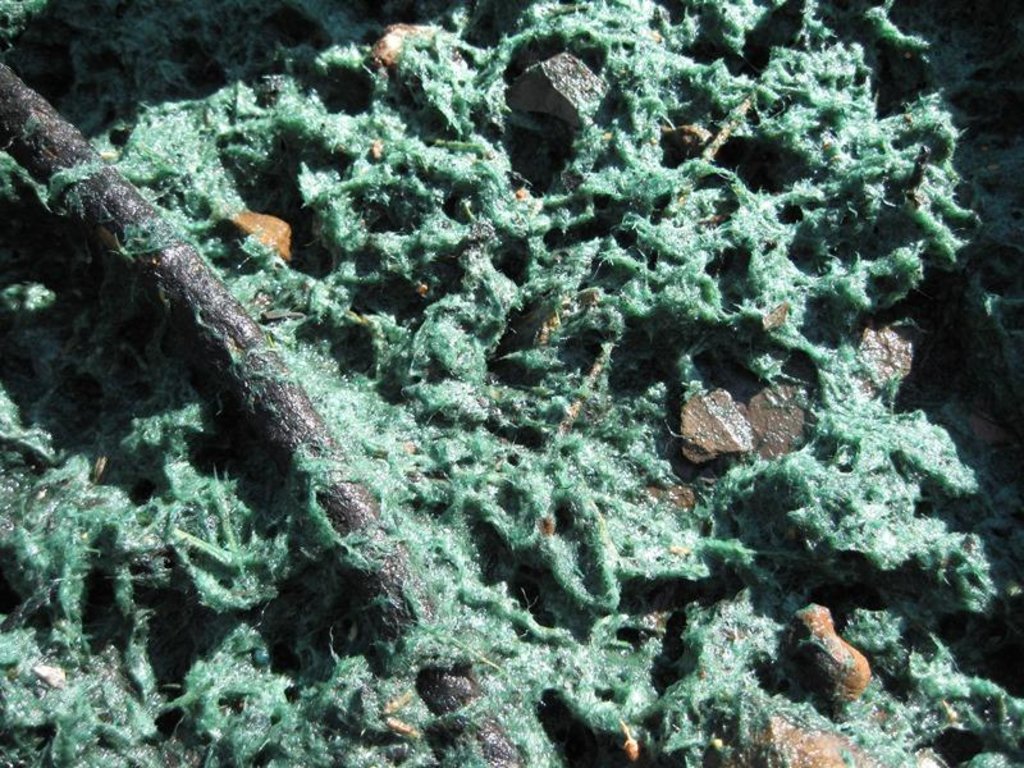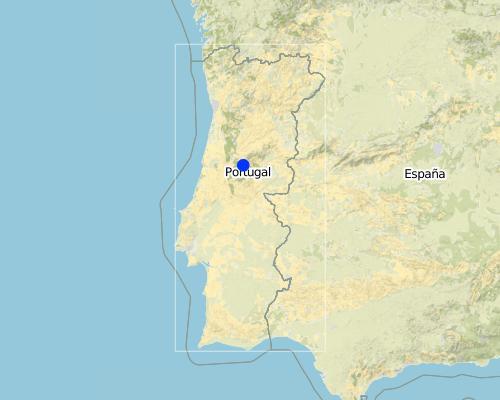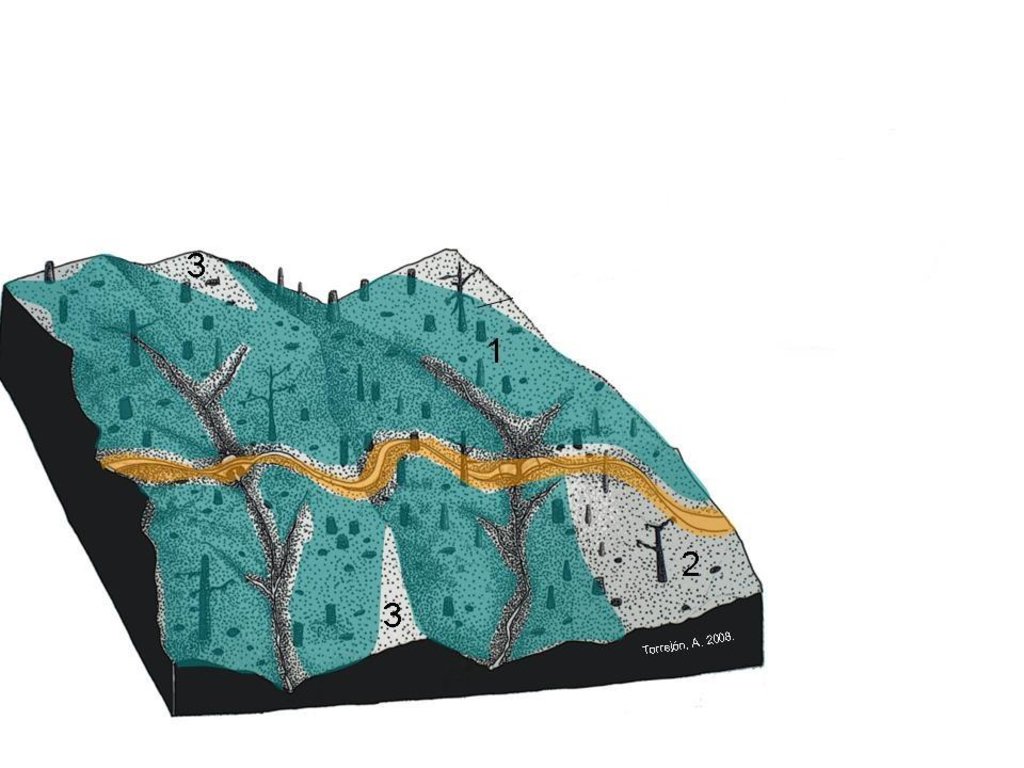Hydromulching for reducing runoff and soil erosion [葡萄牙]
- 创建:
- 更新:
- 编制者: Sergio Prats Alegre Prats
- 编辑者: –
- 审查者: Fabian Ottiger
Hydromulch
technologies_1299 - 葡萄牙
查看章节
全部展开 全部收起1. 一般信息
1.2 参与该技术评估和文件编制的资源人员和机构的联系方式
SLM专业人员:
SLM专业人员:
SLM专业人员:
Keizer Jan Jacob
351 234 370200
jjkeizer@ua.pt.
Centre for Environmental and Marine Studies (CESAM) - Department of Environment and Planning-University of Aveiro
Campus de Santiago, 3810-193 Aveiro, Portugal
葡萄牙
有助于对技术进行记录/评估的项目名称(如相关)
Catastrophic shifts in drylands (EU-CASCADE)有助于对技术进行记录/评估的项目名称(如相关)
Preventing and Remediating degradation of soils in Europe through Land Care (EU-RECARE )有助于对技术进行记录/评估的机构名称(如相关)
Fundação para a Ciência e a Tecnologia (FCT) - 葡萄牙有助于对技术进行记录/评估的机构名称(如相关)
University of Aveiro (University of Aveiro) - 葡萄牙1.3 关于使用通过WOCAT记录的数据的条件
(现场)数据是什么时候汇编的?:
04/10/2007
编制者和关键资源人员接受有关使用通过WOCAT记录数据的条件。:
是
2. SLM技术的说明
2.1 技术简介
技术定义:
Hydromulch is spread immediately after a wildfire in order to reduce overland flow and prevent soil erosion.
2.2 技术的详细说明
说明:
The research team of the University of Aveiro in collaboration with the fire Brigade and a private company applied the hydromulch in a burnt pine area burnt at moderate fire severity. Hydromulch was spreaded manually from a jet hose over a group of erosion plots, and both runoff and erosion were compared to an untreated group of plots.
The hydromulch was applied at a ratio of 3.5 Mg ha-1 providing an initial ground cover of 80%, and was found to reduce post-fire runoff in 70% and soil erosion in 83%.
Purpose of the Technology: Hydromulch has been particularly useful on steep slopes and strongly modified areas such as quarries, construction sites, and cut and fill slopes along roads (Robichaud et al., 2010). The hydromulch is a complex mixture which contain basically water and wood or paper fibers. Additionally it can contain seeds, surfactants, seed-growing biostimulants, nutrients and a green colorant. It is intended that each component affected some of the pieces of the post-fire runoff erosion process.
The high effectiveness in runoff reduction could be related to the effect of the wood fibers, because it increases the surface water storage capacity, but also due to the effect of the surfactants, a wetting agent that reduces SWR and increases soil infiltration. Ideally, post-fire hydromulching must be carried out immediately after the fire, over bare, unprotected and steep burnt areas. It is intended for places in which burnt severity was moderate to high and where there are very important values at risk, such as water reservoirs, populations, industries, human and wild life.
Establishment / maintenance activities and inputs: The hydromulch is applied once, immediately after the wildfire, aerially, from a tractor or also manually by using a jet hose operated by a person on foot. It basically consisted of a mixture of water, wood fibers and seeds. The seed composition should include autoctonous plant species, in order to avoid alien species into the burnt area and increase the germination success. Besides the composition, the application technique can influence the hydromulch effectiveness. Rough (2007) and Robichaud et al. (2010) reported that the hydromulch sprayed from vehicles was intercepted by the standing trees, and they recommended special caution when applying the mixture in areas with a high density of dead trees and from long distances. Aerial hydromulch can be a better and less expensive option, but Hubbert et al. (2012) checked that the intended application rates of 50% and 100% hydromulch cover resulted in only 20–26% and 56%.
Natural / human environment: The natural forest in central Portugal has been substituted by pine and eucalypt trees that are typically planted as monocultures for wood and paper pulp production. The landscape reflects a long history of intense land management, with a mosaic of (semi-) natural and man-made agricultural and afforested lands. In recent years, however, wildfires have increased dramatically in frequency and extent, and have been associated to soil fertility losses, and consequently to socio-economic losses.
2.3 技术照片
2.5 已应用该技术的、本评估所涵盖的国家/地区/地点
国家:
葡萄牙
区域/州/省:
Portugal
有关地点的进一步说明:
Gois-Colmeal
Map
×2.6 实施日期
如果不知道确切的年份,请说明大概的日期:
- 10-50年前
2.7 技术介绍
详细说明该技术是如何引入的:
- 在实验/研究期间
注释(项目类型等):
Hydromulch has been particularly useful on steep slopes and strongly modified areas such as quarries, construction sites, and cut and fill slopes along roads (Emanual, 1976; Benik et al., 2003; Robichaud et al., 2010).
3. SLM技术的分类
3.2 应用该技术的当前土地利用类型

森林/林地
产品和服务:
- 木材
- 薪材
注释:
Major land use problems (compiler’s opinion): Increased runoff and soil erosion, resulting in a decrease of on-site fertility and derived off-site effects such as loss of water quality, reservoirs water volume storage, higher risk of flooding and human beings damage.
Major land use problems (land users’ perception): Loss of wood resources and productivity.
Plantation forestry: Yes
Forest products and services: timber, fuelwood
Constraints of infrastructure network (roads, railways, pipe lines, power lines): price
3.3 有关土地利用的更多信息
每年的生长季节数:
- 1
具体说明:
Longest growing period in days: 270Longest growing period from month to month: September to May
3.4 该技术所属的SLM组
- 改良的地面/植被覆盖
3.5 技术传播
具体说明该技术的分布:
- 均匀地分布在一个区域
如果该技术均匀地分布在一个区域上,请注明覆盖的大致区域。:
- < 0.1 平方千米(10 公顷)
注释:
Plot experiments
3.6 包含该技术的可持续土地管理措施

农艺措施
- A3:土壤表面处理
注释:
Main measures: agronomic measures
Type of agronomic measures: mulching
3.7 该技术强调的主要土地退化类型

土壤水蚀
- Wt:表土流失/地表侵蚀
- Wg:冲沟侵蚀/沟蚀
- Wo:场外劣化效应

物理性土壤退化
- Pk:熟化和结壳
注释:
Main type of degradation addressed: Wt: loss of topsoil / surface erosion
Secondary types of degradation addressed: Wg: gully erosion / gullying, Wo: offsite degradation effects, Pk: sealing and crusting
Main causes of degradation: deforestation / removal of natural vegetation (incl. forest fires) (Monoculture of forest plantations prone to forest fires)
3.8 防止、减少或恢复土地退化
具体数量名该技术与土地退化有关的目标:
- 减少土地退化
注释:
Main goals: mitigation / reduction of land degradation
4. 技术规范、实施活动、投入和成本
4.1 该技术的技术图纸
4.2 技术规范/技术图纸说明
Hydromulch should be spread as homogeneous as possible over steep areas (higher than 15º) burnt at high fire severity (represented in green and 1). Other areas which are flat (2) and burnt at low severity or only partially burnt (3) must be avoided.
Technical knowledge required for field staff / advisors: moderate
Technical knowledge required for land users: high
Main technical functions: control of raindrop splash, control of dispersed runoff: impede / retard, control of concentrated runoff: impede / retard, improvement of ground cover, increase in nutrient availability (supply, recycling,…), sediment retention / trapping, sediment harvesting
Secondary technical functions: control of dispersed runoff: retain / trap, control of concentrated runoff: retain / trap, increase of surface roughness, improvement of surface structure (crusting, sealing), increase of infiltration, increase / maintain water stored in soil
Mulching
Material/ species: water-based mixture of organic fibers and green colorant
Quantity/ density: 3.5Mg ha-1
Remarks: achieve a ground cover of 80%
4.3 有关投入和成本计算的一般信息
其它/国家货币(具体说明):
euros
注明美元与当地货币的汇率(如相关):1美元=:
0.78
注明雇用劳工的每日平均工资成本:
64.50
4.4 技术建立活动
| 活动 | 措施类型 | 时间 | |
|---|---|---|---|
| 1. | Apply hydromulch | 农业学的 | |
| 2. | Trasportation (Track with a jet-spreading system) | 农业学的 | |
| 3. | Other | 农业学的 |
4.5 技术建立所需要的费用和投入
| 对投入进行具体说明 | 单位 | 数量 | 单位成本 | 每项投入的总成本 | 土地使用者承担的成本% | |
|---|---|---|---|---|---|---|
| 劳动力 | Labour | ha | 1.0 | 128.2 | 128.2 | 100.0 |
| 设备 | Machine use | ha | 1.0 | 128.2 | 128.2 | 100.0 |
| 其它 | Hydromulch | ha | 1.0 | 3205.0 | 3205.0 | 100.0 |
| 其它 | Others | ha | 1.0 | 128.2 | 128.2 | 100.0 |
| 技术建立所需总成本 | 3589.6 | |||||
注释:
Duration of establishment phase: 0.1 month(s)
Lifespan of the hydromulch: 1 year
4.7 维护/经常性活动所需要的费用和投入(每年)
注释:
The prices were determined in winter 2009 for central Portugal. In other regions and for other formulations these prices can vary. When compared with straw mulch its price is extremely high, but despite this greater expense, hydromulching has been used especially in the USA after some fires when access was difficult, the slopes were too steep or subject to wind to use straw mulch and when there were particularly important ‘values at risk’, such as water reservoirs, cultural or natural heritage sites, national or regional wildlife protected areas or industrial plants
4.8 影响成本的最重要因素
描述影响成本的最决定性因素:
Accessibility and steepness will raise the costs, but selecting hydromulchings is also a main factor. The more complex the hydromulch the more expensive the application cost. Hydromulch with seeds have also the possibility of introducing invasive plants into the ecosystems and increase the costs. For large and inaccessible areas the aerial hydromulch can reduce the costs.
5. 自然和人文环境
5.1 气候
年降雨量
- < 250毫米
- 251-500毫米
- 501-750毫米
- 751-1,000毫米
- 1,001-1,500毫米
- 1,501-2,000毫米
- 2,001-3,000毫米
- 3,001-4,000毫米
- > 4,000毫米
农业气候带
- 半湿润
Thermal climate class: temperate
5.2 地形
平均坡度:
- 水平(0-2%)
- 缓降(3-5%)
- 平缓(6-10%)
- 滚坡(11-15%)
- 崎岖(16-30%)
- 陡峭(31-60%)
- 非常陡峭(>60%)
地形:
- 高原/平原
- 山脊
- 山坡
- 山地斜坡
- 麓坡
- 谷底
垂直分布带:
- 0-100 m a.s.l.
- 101-500 m a.s.l.
- 501-1,000 m a.s.l.
- 1,001-1,500 m a.s.l.
- 1,501-2,000 m a.s.l.
- 2,001-2,500 m a.s.l.
- 2,501-3,000 m a.s.l.
- 3,001-4,000 m a.s.l.
- > 4,000 m a.s.l.
5.3 土壤
平均土层深度:
- 非常浅(0-20厘米)
- 浅(21-50厘米)
- 中等深度(51-80厘米)
- 深(81-120厘米)
- 非常深(> 120厘米)
土壤质地(表土):
- 中粒(壤土、粉土)
表土有机质:
- 高(>3%)
如有可能,附上完整的土壤描述或具体说明可用的信息,例如土壤类型、土壤酸碱度、阳离子交换能力、氮、盐度等。:
Soil texture is medium (sandy-loam)
Soil fertilits is high
Topsoil organic matter is high (forest soil)
Soil drainage/infiltration is poor-medium
Soil water storage capacity is low
5.4 水资源可用性和质量
地下水位表:
5-50米
地表水的可用性:
中等
水质(未处理):
仅供农业使用(灌溉)
关于水质和水量的注释和进一步规范:
Water quality (untreated) is for agriculutral use only (surface water)
5.5 生物多样性
物种多样性:
- 低
关于生物多样性的注释和进一步规范:
Forest plantation
5.6 应用该技术的土地使用者的特征
生产系统的市场定位:
- 混合(生计/商业
- 商业/市场
非农收入:
- > 收入的50%
相对财富水平:
- 贫瘠
- 平均水平
个人或集体:
- 员工(公司、政府)
说明土地使用者的其他有关特征:
Population density: < 10 persons/km2
Annual population growth: < 0.5%
40% of the land users are average wealthy.
60% of the land users are poor.
Market orientation of production system: subsistence (self-supply), mixed (subsistence/ commercial, commercial/ market
5.7 应用该技术的土地使用者拥有或租用的平均土地面积
- < 0.5 公顷
- 0.5-1 公顷
- 1-2 公顷
- 2-5公顷
- 5-15公顷
- 15-50公顷
- 50-100公顷
- 100-500公顷
- 500-1,000公顷
- 1,000-10,000公顷
- > 10,000公顷
这被认为是小规模、中规模还是大规模的(参照当地实际情况)?:
- 大规模的
注释:
Average area of land owned or leased by land users applying the Technology: 2-5 ha, 5-15 ha, 15-50 ha
5.8 土地所有权、土地使用权和水使用权
土地所有权:
- 个人,未命名
5.9 进入服务和基础设施的通道
健康:
- 贫瘠
- 适度的
- 好
教育:
- 贫瘠
- 适度的
- 好
技术援助:
- 贫瘠
- 适度的
- 好
就业(例如非农):
- 贫瘠
- 适度的
- 好
市场:
- 贫瘠
- 适度的
- 好
能源:
- 贫瘠
- 适度的
- 好
道路和交通:
- 贫瘠
- 适度的
- 好
饮用水和卫生设施:
- 贫瘠
- 适度的
- 好
金融服务:
- 贫瘠
- 适度的
- 好
6. 影响和结论性说明
6.1 该技术的现场影响
社会经济效应
生产
木材生产
水资源可用性和质量
家畜用水的可用性
社会文化影响
SLM/土地退化知识
Improved livelihoods and human well-being
注释/具体说明:
Livelihoods and human well-being (eg education, health) are not changed by the use of Hydromulching.
生态影响
水循环/径流
水量
地表径流
地下水位/含水层
蒸发
土壤
土壤水分
土壤覆盖层
土壤流失
土壤结壳/密封
生物多样性:植被、动物
外来入侵物种
注释/具体说明:
If hydromulching is with seeds, it can introduce invasive species
6.2 该技术的场外影响已经显现
下游洪水
对邻近农田的破坏
对公共/私人基础设施的破坏
6.3 技术对渐变气候以及与气候相关的极端情况/灾害的暴露和敏感性(土地使用者认为的极端情况/灾害)
渐变气候
渐变气候
| 季节 | 气候变化/极端天气的类型 | 该技术是如何应对的? | |
|---|---|---|---|
| 年温度 | 增加 | 好 |
气候有关的极端情况(灾害)
气象灾害
| 该技术是如何应对的? | |
|---|---|
| 局地暴雨 | 好 |
| 局地风暴 | 好 |
气候灾害
| 该技术是如何应对的? | |
|---|---|
| 干旱 | 好 |
水文灾害
| 该技术是如何应对的? | |
|---|---|
| 比较和缓的(河道)洪水 | 未知 |
其他气候相关的后果
其他气候相关的后果
| 该技术是如何应对的? | |
|---|---|
| 缩短生长期 | 好 |
6.4 成本效益分析
技术收益与技术建立成本相比如何(从土地使用者的角度看)?
短期回报:
消极
长期回报:
中性/平衡
技术收益与技术维护成本/经常性成本相比如何(从土地使用者的角度看)?
短期回报:
积极
长期回报:
非常积极
注释:
Hydromulch is seen as a very expensive treatment without clear advantages at the short term, but good at the long term period.
6.5 技术采用
注释:
Comments on spontaneous adoption: The technology has not been applied by any land user. It is a newly research-developed technology.
There is no trend towards spontaneous adoption of the Technology
Comments on adoption trend: The owners are not aware because of the costs, but they will change if the government start funding it.
6.7 该技术的优点/长处/机会
| 土地使用者眼中的长处/优势/机会 |
|---|
|
It will prevent sediment movement and accumulation over roads and down slope properties and values at risk. How can they be sustained / enhanced? By developing more economic application formulations and schemes. |
| 编制者或其他关键资源人员认为的长处/优势/机会 |
|---|
|
It is a technology that has the advantages of the mulching technique and also can be used as a tool for increase the biodiversity, expand the distribution of some protected plant species at the same time that soil is keep in place. How can they be sustained / enhanced? The use of longer mulch fibers can still increase the hydromulch effectiveness, since some researchers found the longest fibers to be more effective in soil erosion control than the shorter ones. |
6.8 技术的弱点/缺点/风险及其克服方法
| 编制者或其他关键资源人员认为的弱点/缺点/风险 | 如何克服它们? |
|---|---|
| Hydromulch is very expensive when compared to straw mulch, but not more effective in post-fire soil erosion reduction. | To develop hydromulch mixtures using the lowest amount of water as well as other chemical components to the minimum. |
| Some researchers found very low performance due to the interception of the hydromulch jet by the dead standing trees | Verify when applying it that the ground coverreach a minimum of 60% |
| Sometimes the mulch component (wood fibers, chopped paper) can be removed very easily by heavy rainfall, and thus treatment effectiveness can decrease greatly. |
7. 参考和链接
7.2 参考可用出版物
标题、作者、年份、ISBN:
EFFECTIVENESS OF HYDROMULCHING TO REDUCE RUNOFF AND EROSION
IN A RECENTLY BURNT PINE PLANTATION IN CENTRAL PORTUGAL. Prats et al. (in press). Land Degradation and Development DOI: 10.1002/ldr.2236
2-Effects of hydromulch on post-fire erosion and plant recovery in chaparral shrublands of
southern California. Hubbert et al. 2012 International Journal of Wildland Fire 21:155–167.
Rough D. 2007. Effectiveness of rehabilitation treatments in reducing postfire
erosion after the Hayman and Schoonover fires, Colorado Front
Range. Fort Collins, CO: Colorado State University. MsC. Thesis; 186.
Robichaud PR, Ashmun LE, Sims BD. 2010. Post-fire treatment effectiveness
for hillslope stabilization. General Technical Report, RMRS-GTR-240. U.
S. Department of Agriculture, Forest Service, Rocky Mountain Research
Station, Fort Collins, CO.
链接和模块
全部展开 全部收起链接
无链接
模块
无模块


